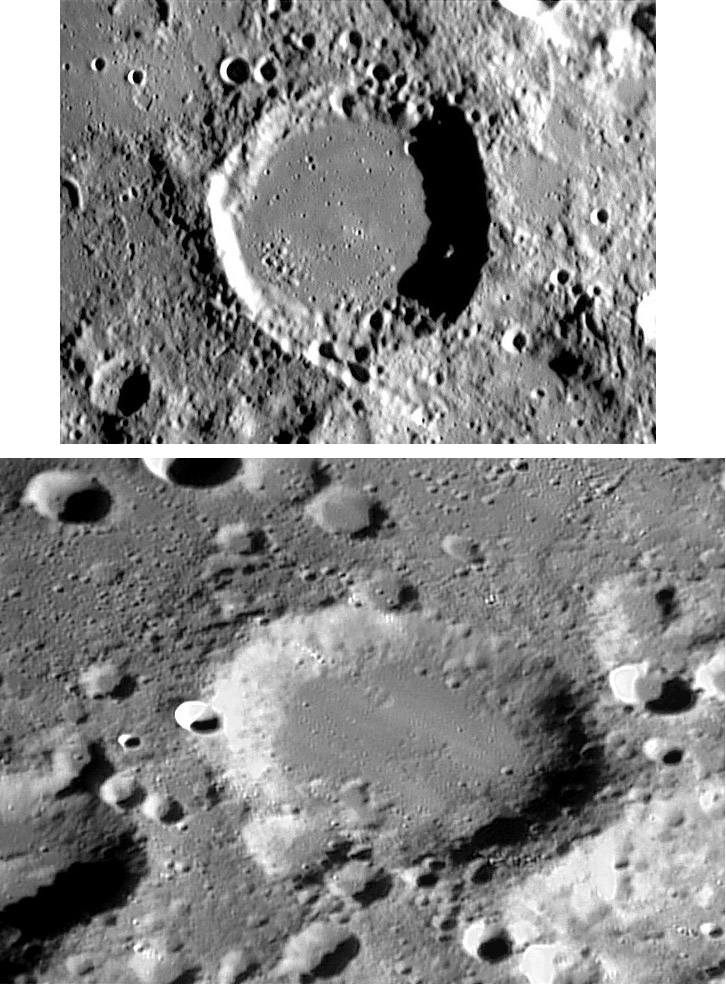|
|
| (5 intermediate revisions by the same user not shown) |
| Line 1: |
Line 1: |
| | __NOTOC__ | | __NOTOC__ |
| | =A Very Good Humility Lesson= | | =A Very Good Humility Lesson= |
| | + | <!-- Start of content --> |
| | + | <div class="post" id="post-700"> |
| | | | |
| − |
| + | <div class="storycontent"> |
| − | <div class="post" id="post-700">
| + | <p>[[File:Albufeda060405.jpg|albufeda060405.jpg]]<br /> |
| − |
| |
| − | <div class="storycontent">
| |
| − | <p>[[File:Albufeda060405.jpg|albufeda060405.jpg]]<br />
| |
| | <em>image by [mailto:daversin.bruno@neuf.fr Bruno Daversin], France</em></p> | | <em>image by [mailto:daversin.bruno@neuf.fr Bruno Daversin], France</em></p> |
| − | <p>Three days ago we were [http://www.lpod.org/?m=20061105 atwitter] about the possible discovery of a tiny rille on the eastern edge of the floor of Abulfeda. Bruno has sent his excellent image of Abulfeda, recently reprocessed with the new version of IRIS, that also shows the hint of a rille - but really it is a small secondary crater chain. Bruno comments that it also looked like a rille to him, but was really a humility lesson for us all. Actually, when I see his images, such as the similar-shaped Abulfeda (above) and Cuvier (below), I feel humble in the presence of his imaging mastery. These are examples of what happens to Tycho type craters that are modified by seismic shaking, small crater bombardment and infilling. Their central peaks are gone - presumably covered by whatever the crater fill material is that makes the smooth floors. Are the tiny hills near each crater’s center the tips of their peaks? Tycho type craters are also marked by multiple layers of terraces, but on these older craters the terraces have been smoothed out; Abulfeda appears not quite as old for vestiges of its terraces remain. Similarly, hints of the elevated rim of Abulfeda exist whereas Cuvier’s rim seems worn down to the level of the surroundings. Finally, bright rays and secondary craters from Tycho litter Cuvier’s floor.</p> | + | <p>Three days ago we were [[November_5,_2006|atwitter]] about the possible discovery of a tiny rille on the eastern edge of the floor of Abulfeda. Bruno has sent his excellent image of Abulfeda, recently reprocessed with the new version of IRIS, that also shows the hint of a rille - but really it is a small secondary crater chain. Bruno comments that it also looked like a rille to him, but was really a humility lesson for us all. Actually, when I see his images, such as the similar-shaped Abulfeda (above) and Cuvier (below), I feel humble in the presence of his imaging mastery. These are examples of what happens to Tycho type craters that are modified by seismic shaking, small crater bombardment and infilling. Their central peaks are gone - presumably covered by whatever the crater fill material is that makes the smooth floors. Are the tiny hills near each crater’s center the tips of their peaks? Tycho type craters are also marked by multiple layers of terraces, but on these older craters the terraces have been smoothed out; Abulfeda appears not quite as old for vestiges of its terraces remain. Similarly, hints of the elevated rim of Abulfeda exist whereas Cuvier’s rim seems worn down to the level of the surroundings. Finally, bright rays and secondary craters from Tycho litter Cuvier’s floor.</p> |
| | <p>[mailto:tychocrater@yahoo.com Chuck Wood]</p> | | <p>[mailto:tychocrater@yahoo.com Chuck Wood]</p> |
| | <p><strong>Technical Details:</strong><br /> | | <p><strong>Technical Details:</strong><br /> |
| Line 15: |
Line 14: |
| | Rükl chart 45 & 74<br /> | | Rükl chart 45 & 74<br /> |
| | [http://www.ludiver.com/photos/disp_serie.php?id_album=15&offset=0 Ludiver’s Moon photos]</p> | | [http://www.ludiver.com/photos/disp_serie.php?id_album=15&offset=0 Ludiver’s Moon photos]</p> |
| − | </div>
| + | <p><b>Yesterday's LPOD:</b> [[November 7, 2006|20 M Resolution!]] </p> |
| − |
| + | <p><b>Tomorrow's LPOD:</b> [[November 9, 2006|Glorious Times Two]] </p> |
| − | | + | </div> |
| − | ---- | + | <!-- End of content --> |
| − | ===COMMENTS?===
| + | {{wiki/ArticleFooter}} |
| − | Click on this icon [[image:PostIcon.jpg]] at the upper right to post a comment.
| |




